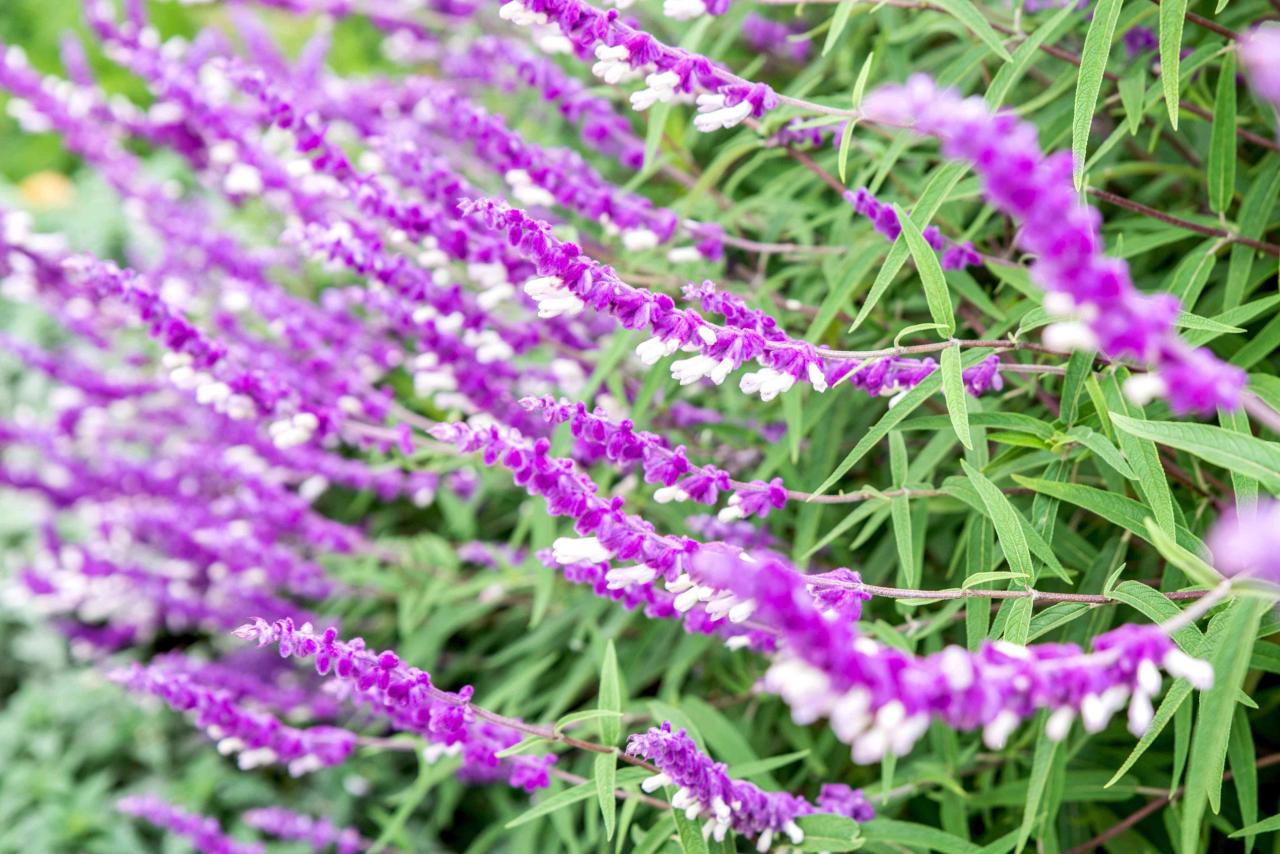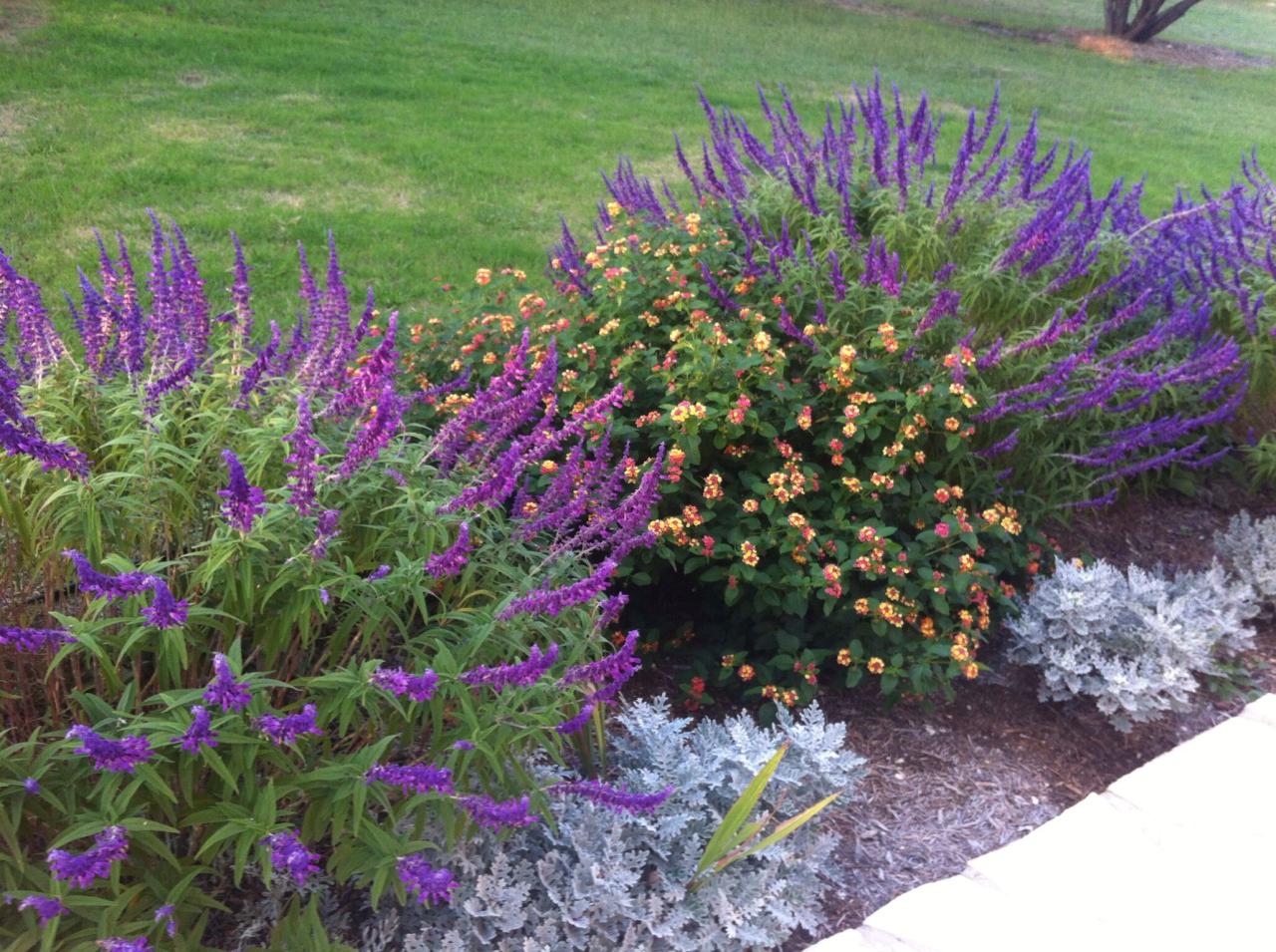Mexican Sage Companion Plants – When it comes to creating a vibrant and thriving garden, understanding the importance of companion planting can significantly enhance your gardening experience. One plant that stands out in many gardens is the Mexican Sage (Salvia leucantha). With its stunning purple flowers and aromatic foliage, this perennial is not only beautiful but also serves as a wonderful companion for various other plants. In this article, we will explore the best companion plants for Mexican Sage, their benefits, and how to create a flourishing garden environment.
What is Mexican Sage?
Mexican Sage, also known as Velvet Sage, is a perennial herb native to Mexico and Central America. It boasts tall spikes of purple flowers that bloom from late summer to fall, attracting pollinators such as bees and butterflies. Its aromatic leaves release a pleasant fragrance, making it a delightful addition to any garden. Beyond its beauty, Mexican Sage is a drought-tolerant plant, thriving in well-drained soil and full sun.
Benefits of Companion Planting

Companion planting refers to the strategic planting of different crops or flowers in proximity for mutual benefit. This technique can lead to a more productive garden by:
- Enhancing growth and flavor
- Reducing pests and diseases
- Improving nutrient uptake
- Creating habitat for beneficial insects
With Mexican Sage as a focal point in your garden, choosing the right companion plants can amplify these benefits. 🌱
Best Companion Plants for Mexican Sage

When selecting companion plants for Mexican Sage, consider those that thrive in similar growing conditions and complement each other in appearance and functionality. Here’s a list of some ideal companions:
| Companion Plant | Benefits | Growing Conditions |
|---|---|---|
| Mexican Marigold | Deters pests and attracts pollinators | Full sun, well-drained soil |
| Lavender | Attracts pollinators, repels pests | Full sun, drought-resistant |
| Black-eyed Susan | Provides contrast in color, attracts beneficial insects | Full sun, tolerant of drought |
| Yarrow | Encourages beneficial insects, enhances soil health | Full sun, adaptable soil types |
| Sedum | Ground cover, drought-tolerant | Full sun, well-drained soil |
Mexican Marigold
Mexican Marigolds are fantastic companions for Mexican Sage. Their vibrant colors not only add visual appeal to your garden but they also deter harmful insects such as nematodes and aphids. These flowers thrive in similar conditions as Mexican Sage, making them an easy match!
Lavender
Lavender’s aromatic fragrance complements the scent of Mexican Sage, creating a sensory experience in your garden. Additionally, Lavender is known for attracting pollinators while repelling certain pests. Its drought-resistant nature and need for full sun make it an excellent companion. 🌸
Black-eyed Susan, Mexican Sage Companion Plants
With their bright yellow petals, Black-eyed Susans create a stunning contrast to the purple flowers of Mexican Sage. They are low-maintenance and thrive in similar sunny environments, helping to draw beneficial insects such as ladybugs, which can help control pest populations.
Yarrow
Yarrow is not only a hardy perennial but also a magnet for beneficial insects like ladybugs and lacewings. It can help improve soil health while thriving in similar conditions as Mexican Sage. Plus, its feathery foliage adds texture to your garden! 🌼
Sedum
Sedum varieties, or stonecrops, are perfect for ground cover around Mexican Sage. They are drought-tolerant and can help suppress weeds while retaining soil moisture for neighboring plants. Their unique shapes and colors make them visually interesting companions.
Growing Conditions for Mexican Sage and Its Companions: Mexican Sage Companion Plants
Mexican Sage and its companion plants prefer the following growing conditions:
- Light: Full sun (6-8 hours of sunlight daily)
- Soil: Well-drained soil with good fertility
- Water: Drought-tolerant once established, requiring moderate watering during dry spells
> Important Note: Over-watering can lead to root rot, especially in well-draining soils. Always allow the soil to dry out between watering sessions.
Designing a Companion Garden
When designing your garden with Mexican Sage and its companions, consider the following tips:
- Layering: Place taller plants like Mexican Sage in the back, with shorter companions like Sedum in the front.
- Color Coordination: Use contrasting colors to create visual interest; purple and yellow can be particularly striking.
- Seasonal Interest: Choose plants that bloom at different times for a continuous display of color throughout the seasons.
Pest and Disease Management
By planting Mexican Sage with its companions, you can naturally reduce pest populations and the risk of diseases. Here are some tips for managing potential threats:
- Keep the garden clean of debris to minimize hiding places for pests.
- Use organic insecticidal soap if pest populations rise significantly.
- Encourage natural predators by providing habitats for birds and beneficial insects.
Conclusion
Creating a companion garden with Mexican Sage and its ideal partners can enhance not only the beauty of your landscape but also its health and productivity. By understanding the benefits of companion planting and choosing the right plants, you can cultivate a vibrant and thriving garden ecosystem that attracts pollinators and deters pests. Embrace the art of gardening with Mexican Sage, and watch your garden flourish! 🌿
